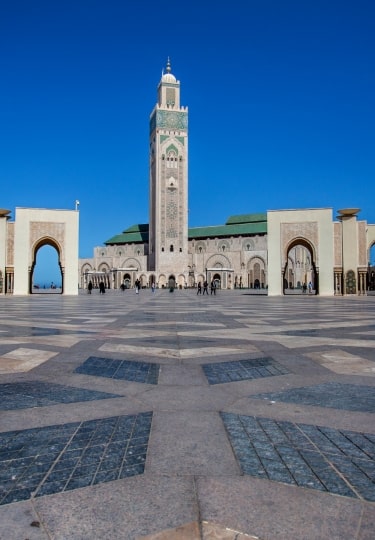The best things to do in Casablanca, Morocco’s largest city, are as varied as the wares peddled in the city’s souks, or markets.
Brushing the Atlantic and boasting one of North Africa’s largest ports, Casablanca has long been an important center of trade. Nowadays, regeneration projects of Morocco’s economic powerhouse are helping the city craft a new international reputation; one that moves beyond the iconic World War II film of the same name.
With two distinct medinas, one of the world’s most magnificent mosques, French-led Art Deco architecture, and attractive beaches, Casablanca invites exploration in both its contemporary and classic quarters.
Tour the Hassan II Mosque
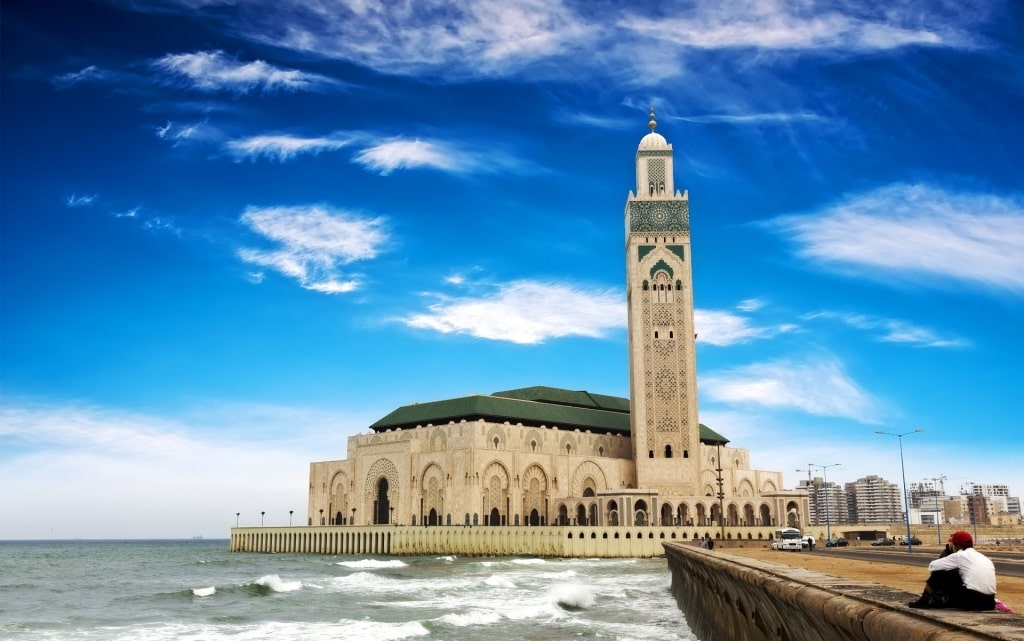
Hassan II Mosque
Casablanca’s most prominent landmark is also its most modern. Painstakingly constructed over six years, the Hassan II Mosque, one of the world’s largest, was inaugurated in 1993.
A mammoth monument to the Islamic faith, the interior can accommodate 25,000 for prayers. Outside, the world’s second tallest minaret towers 689 feet above the dedicated space for a further 80,000 people.
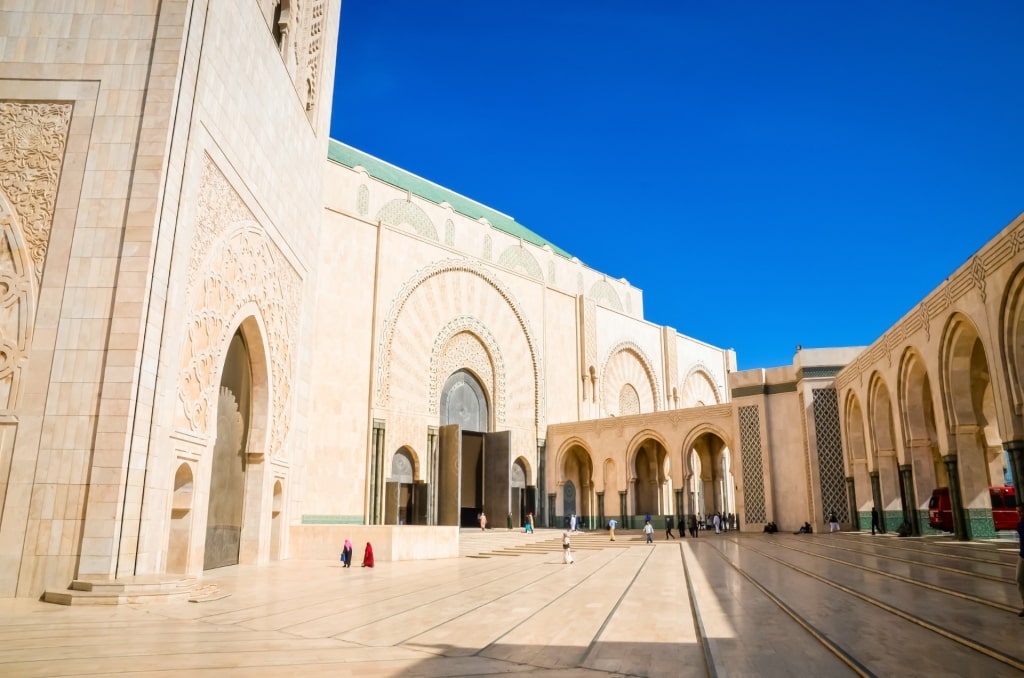
Hassan II Mosque
This is one of only two mosques in Morocco that non-Muslim tourists can officially visit, so a guided tour of the mesmerizing interior is perhaps the best thing to do in Casablanca. In every corner, the embellishments by thousands of artisans from across the country are extraordinary.
As you enter the main hall, the sheer height of the sculpted cedarwood and molded stucco retractable ceiling is humbling. Beyond, the intricate floral paintings, patterned titanium doors—the King’s entranceway—and the zellige (Moroccan ceramic tiles) adorned underground ablution halls will leave you equally spellbound.
Explore the Old Medina
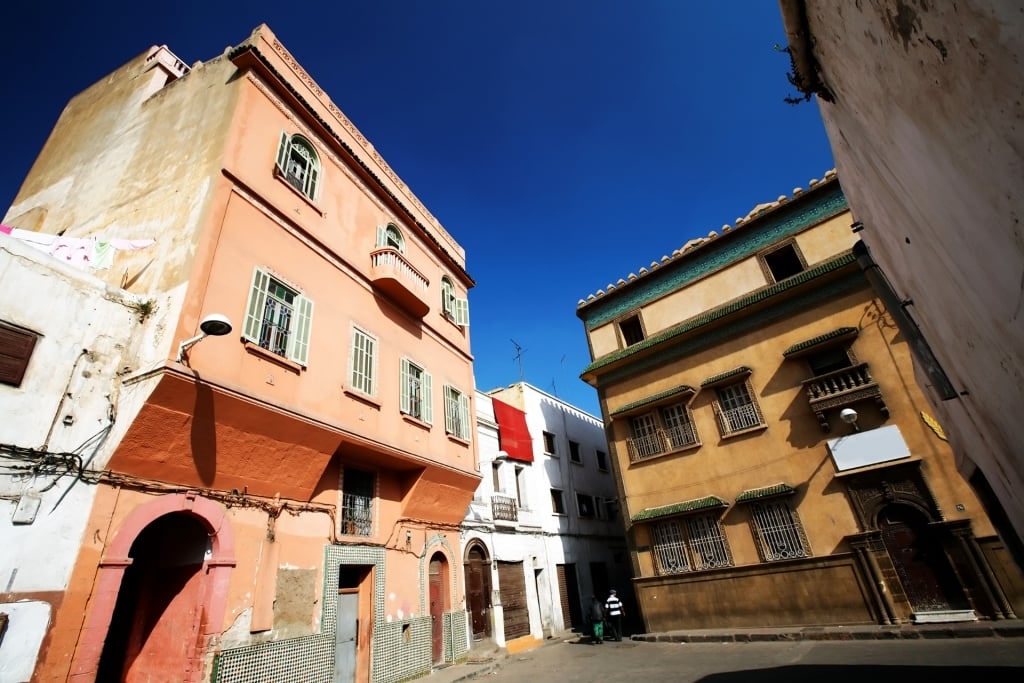
Old Medina
Casablanca’s pulsating heart for centuries, the area now known as the Old Medina (Ancienne Medina) has seen numerous name and command changes. Founded by the Amazigh, Morocco’s Berber people, before Roman occupation, the current maze of residential and market-holding streets had taken their form by the 20th century.
Sadly, by the mid-1900s, the Medina started to suffer neglect as the French-built Quarter Habous became more popular. Nowadays, regeneration projects initiated by the current King, Mohammed VI, are revitalizing the district.
Visit the recently opened interpretation center and the restored Ettedgui Synagogue for insight into Medina’s interfaith history. Embrace the animated activity of the Medina Market. Or dine at some of Casablanca’s most renowned restaurants. La Sqala, housed in part of the 18th-century fortress, and Rick’s Café are two of the best.
Retreat to Rick’s Café

Rick’s Café
Once nothing more than a silver screen set, the real-life Rick’s Café opened its doors some 60 years after the premiere of the epic film. It was former U.S. diplomat Kathy Kriger who decided to bring the bar to life, creating a space that is reminiscent, if not a replica, of the movie version.
Every inch of the interior, anchored around the courtyard of a converted mansion-style home, has received Kriger’s thoughtful touch. Her own flair complements elements that stay true to the film.
For cinema fans, a visit to Rick’s Café is one of the best things to do in Casablanca, even if solely for a photo alongside the piano. Lunch reservations are recommended due to the café’s legendary status.
See the Church of Notre Dame of Lourdes’ Stained Glass Windows
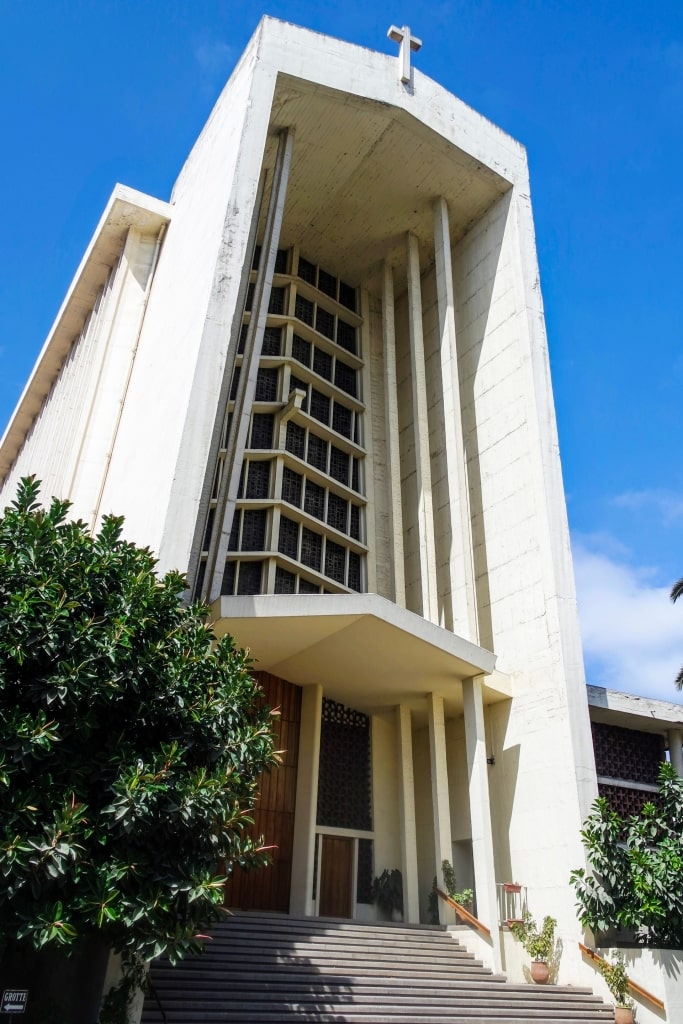
Church of Notre Dame of Lourdes
Hulking, concrete, and almost overbearing, the Church of Notre Dame of Lourdes certainly stands out. This is modernist architecture at its most brutal. Yet once you venture inside, you’ll quickly forgive the imposing exterior.
A throng of stained glass windows, the creations of Gabriel Loire, scatter rays of cobalt, crimson and jade over the pews. Extending to the top of the towering entranceway, the works are remarkable. Linger to enjoy the soft light and admire the various religious scenes depicted before visiting the grotto outside.
Visit the Villa of Arts
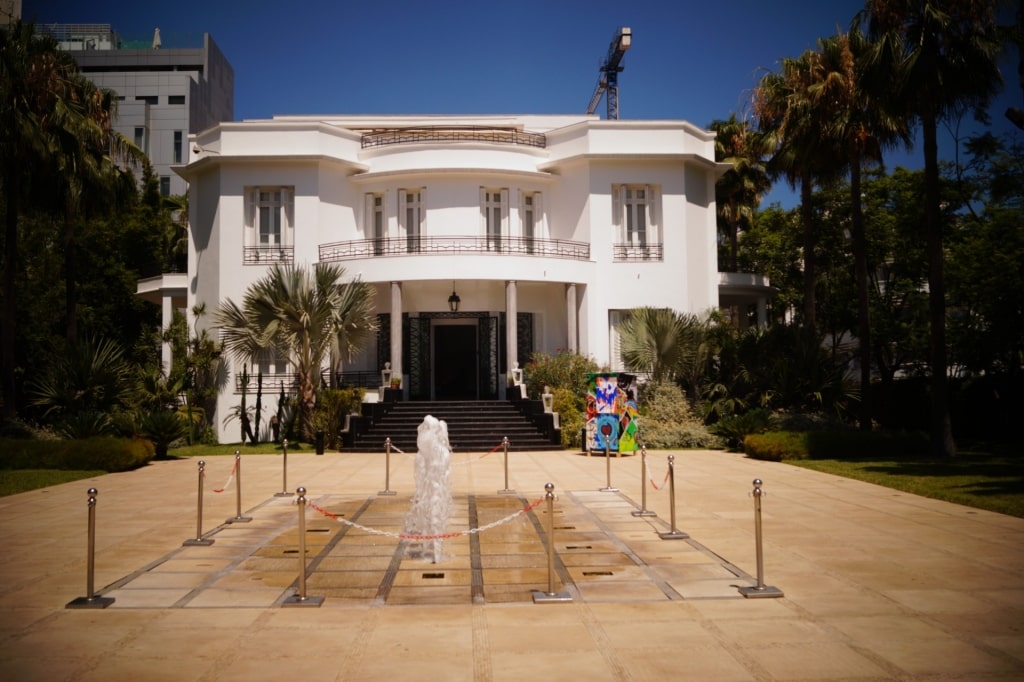
Villa of Arts Photo by Fraguando on Wikimedia Commons, licensed under CC BY-SA 4.0
Casablanca’s Art Deco movement, a legacy of the French protectorate years, can be credited with the construction of many landmark buildings. One of the most impressive is this former private dwelling-turned-cultural space.
Inside the gallery, the original 1930s features complement and contrast with the creative, bold and primarily Moroccan contemporary art pieces that adorn the now stripped-back white walls.
Traditional paintings, sculptures, and Amazigh textiles are all featured. In addition, an ever-changing program of temporary exhibitions often emphasizes the works of artists from across Africa.
Shop at Souq Habous, Casablanca’s New Medina
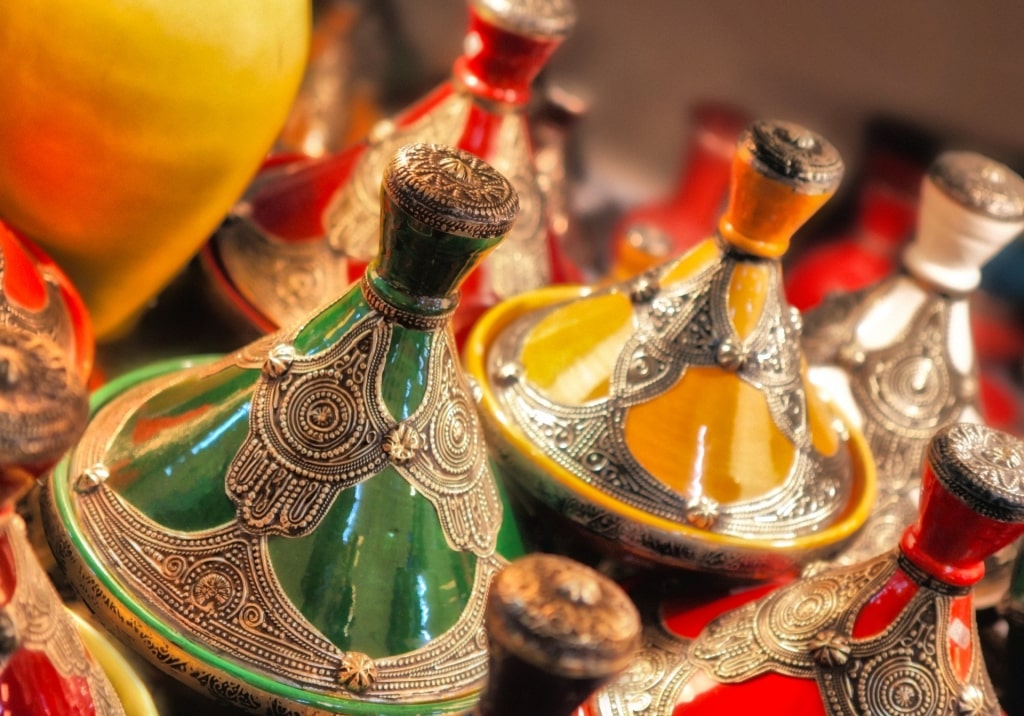
Market in Casablanca
Alongside touring the Ancienne Medina, a visit to the Habous Quarter is one of the top things to do in Casablanca.
Constructed under the French protectorate in the 1920s, the “New Medina” blends modernity with age-old design. The result is sidewalks, wider streets, and a more spacious ambiance. Yet the use of traditional architectural styles keeps the district distinctively Moroccan. It’s also a terrific place to shop.
At the Souq Habous, you’ll find all the usual suspects on sale: baked clay ceramics, hand-detailed tea sets, and wool-woven rugs.
But it’s the Great Olive Market that’s most compelling, flanking an outside courtyard. It’s impossible not to be tempted by the mounds of shiny, plump olives glistening in endless oversized baskets.
Peek at the Mahkama of Pacha and Royal Palace
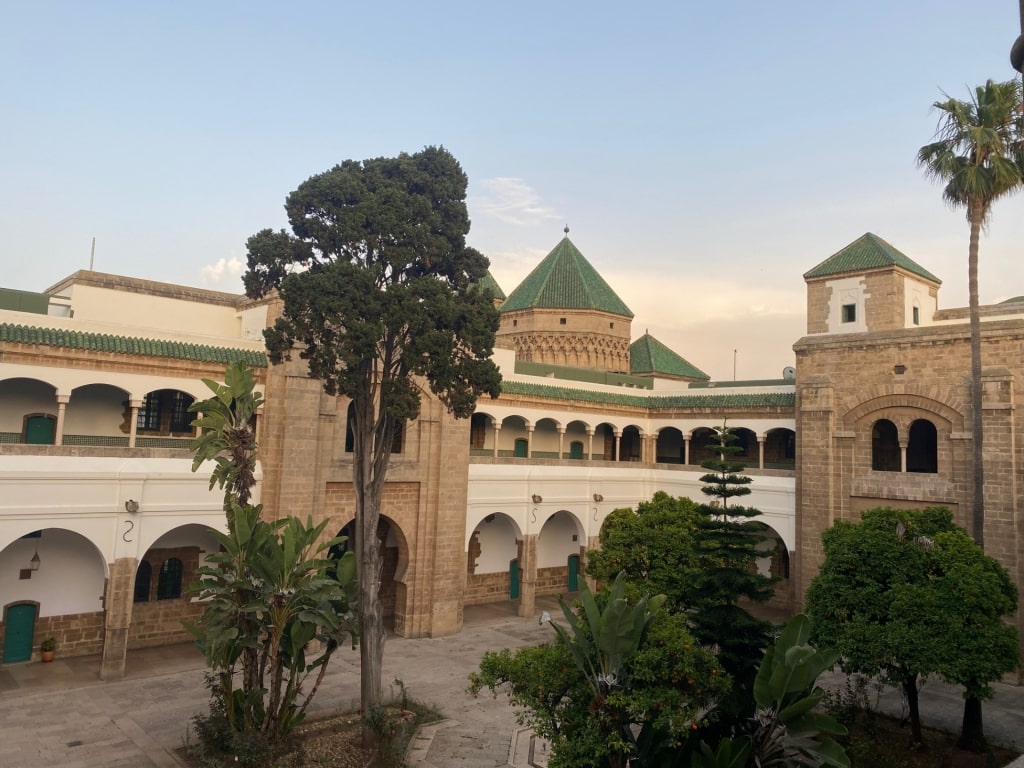
Mahkama of Pacha
Following the Habous Quarter’s creation and its subsequent prosperity, distinguished buildings cropped up around the neighborhood. Many of these remain behind closed doors, but some exteriors are worth a glance.
The Mahkama du Pacha, a dazzling marble and mosaic Moorish-inspired courthouse, is the district’s diamond. Still in official use, access is restricted. However, guided tour groups—and on occasion, lucky, well-timed visitors—can enjoy a peek at the magnificent interior.
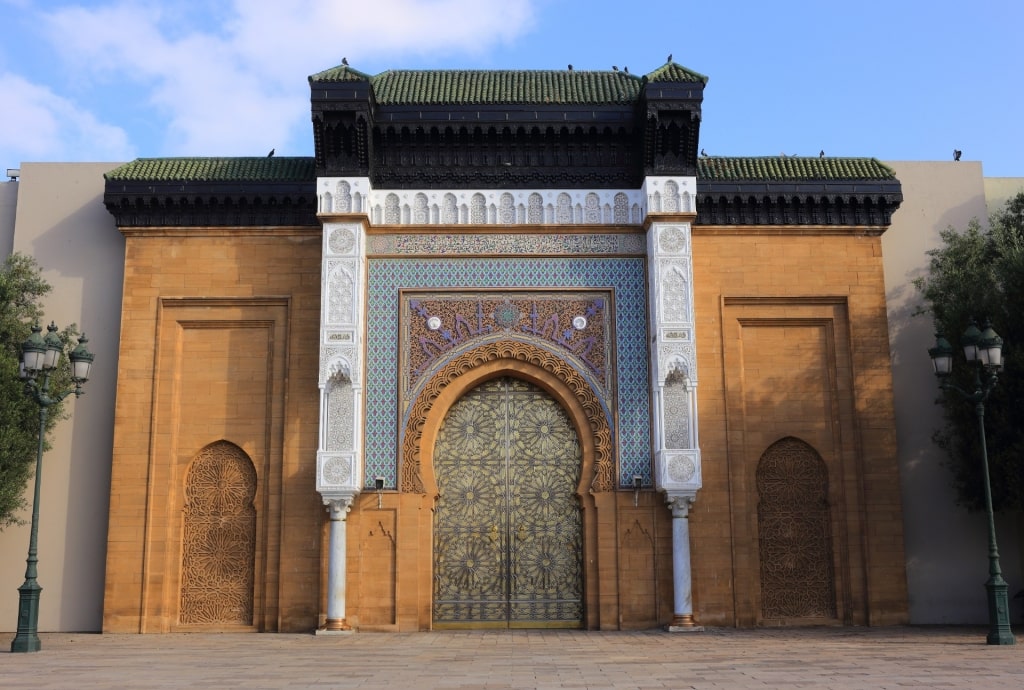
Royal Palace
Likewise, the Royal Palace, one of four in Morocco, is only visitable on monarchical invitation. Views of the imposing entrance gates being the closest you can get to the King.
Read: Best Things to Do in Morocco
Stroll the Corniche
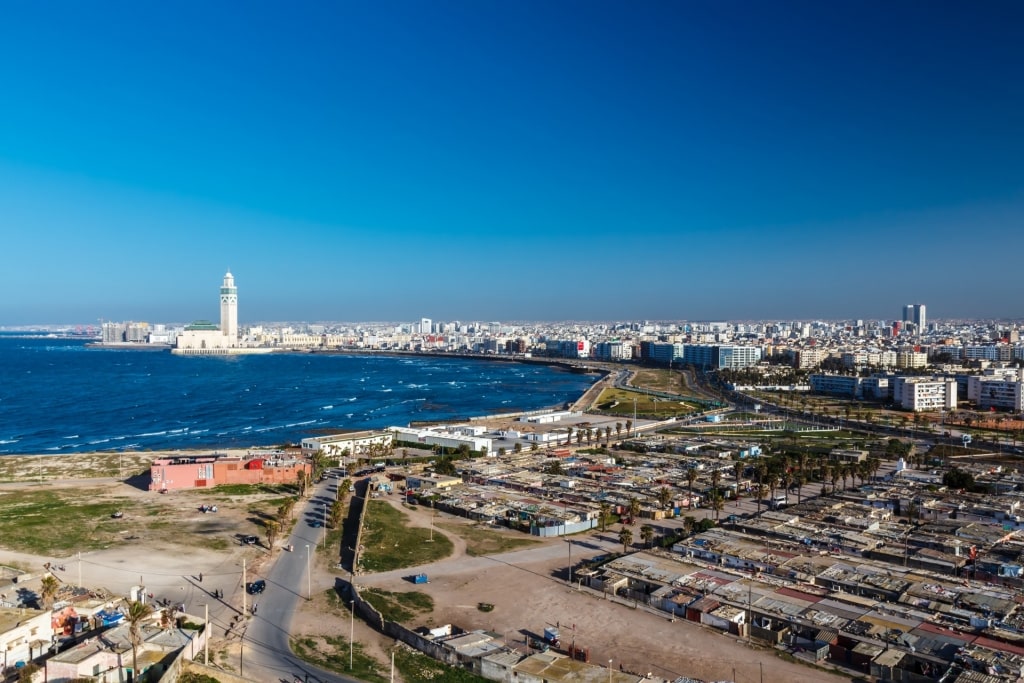
Corniche
Casablanca is known for La Corniche, a cosmopolitan, ocean-facing suburb, anchored around the promenade of the same name. Long the go-to neighborhood for trendy beach clubs and top-rated seafood, this is Casablanca at its most fashionable.
For a soothing break from the scents and sounds of the medina, stroll along this expansive esplanade that links Hassan II Mosque to Aïn Diab Beach, one of the best beaches in Morocco. With the roar of the Atlantic and never-ending azure vistas, you’ll soon forget you’re in the country’s most populated city.
Still, signs of modern Morocco prevail, furnishing plenty of opportunities to escape the sun’s heat. Dip into an upscale shopping mall, pause for a refreshing cocktail in a chic bar, or take a dip at one of the urban beaches.
Unwind at Aïn Diab Beach

Aïn Diab Beach
At the end of La Corniche, where the esplanade joins with beach-fronted Boulevard L’Ocean Atlantique, you’ll find Plage Aïn Diab, arguably the city’s finest expanse of butterscotch sand. On a sizzling day, one of the best things to do in Casablanca is to follow in the footsteps of the locals and make a beeline for this beach.
As one of Casablanca’s largest urban beaches, it’s usually easy to find a private spot to lounge. Settle in and sunbathe before taking a refreshing Atlantic Ocean dip. There are plenty of facilities, including public bathrooms for changing, mint tea sellers plying the sands, and nearby upscale seafood restaurants.
Try Local Dishes at the Central Market
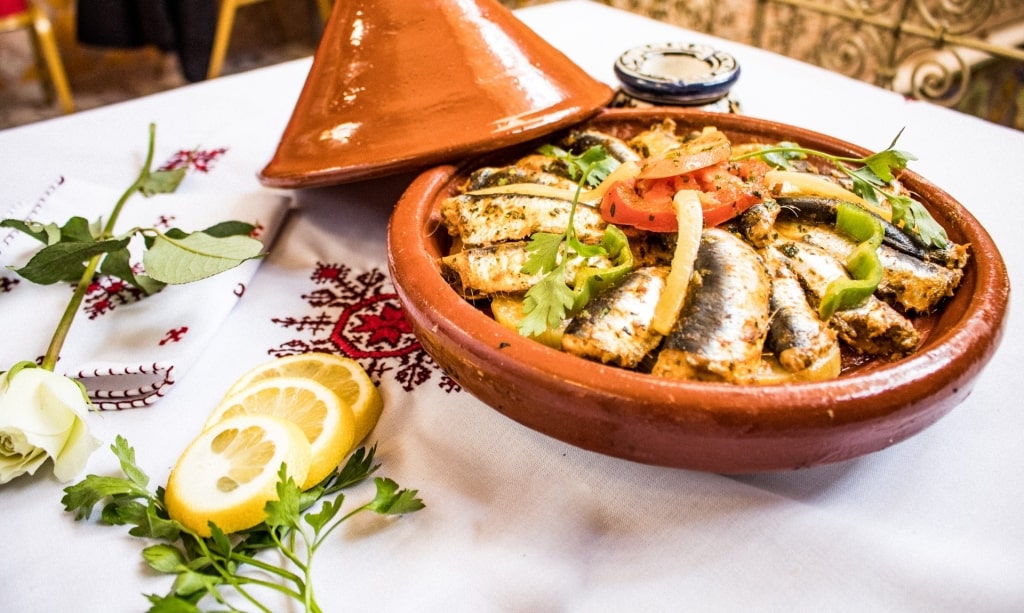
Tagine
Morocco’s traditional dishes such as tagine, a flavorsome, slow-cooked meat stew cooked in an earthenware pot, and well-seasoned couscous are irresistible staples countrywide. But in coastal Casablanca, the spotlight shines brightest on the Atlantic Ocean’s bounty.
One of the city’s best places to sample fresh fish is Marché Central. It’s a simple setting, popular with residents, that comes with added theatrical flair. Inside the seafood souk, stalls are laden with the day’s catch: oysters, lobster, sardines, squid, shrimp, swordfish, and plenty more.
The etiquette here is to bargain directly with the vendors while selecting your chosen seafood. Next, take it to one of the no-frills restaurants around the perimeter to be prepared. Or, if you’d prefer, have the restaurant staff arrange a platter on your behalf.
Enjoy a Hammam
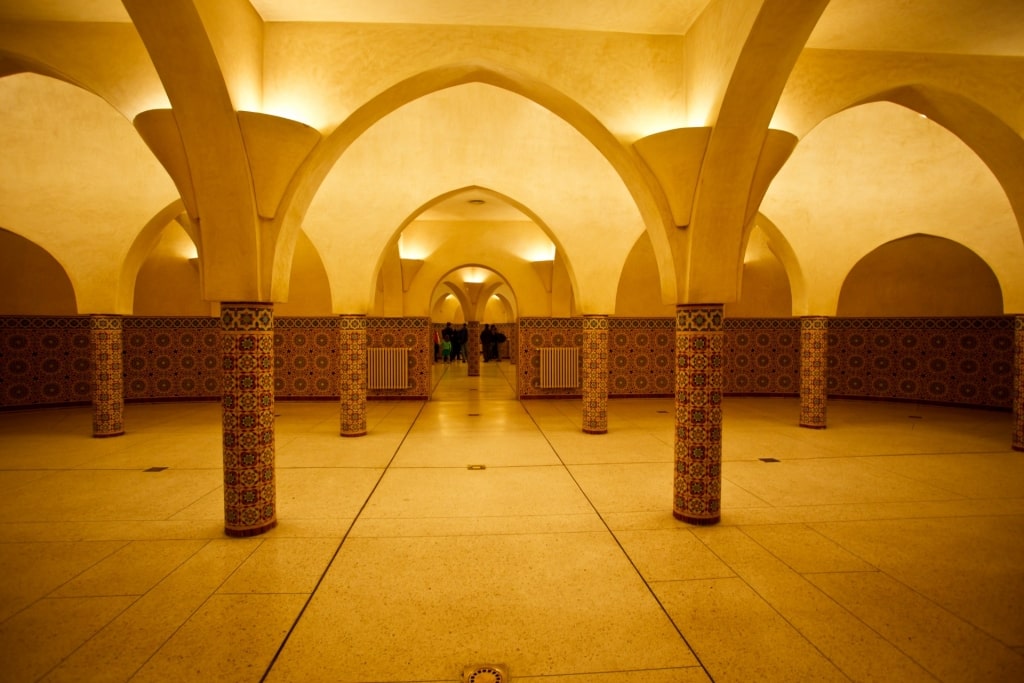
Hammam
If Casablanca starts to feel a little overwhelming, a traditional Moroccan hammam is invariably the answer.
Inspired by Roman baths, this is a cleansing therapy for body and mind. And it’s a typically local experience. In the days when private homes rarely had bathrooms, these communal spaces flourished.
What makes the hammam that Morocco is known for different from those found elsewhere is the use of hot steam rooms for detoxing and purifying, rather than pools.
While local, more basic hammans are plentiful, many have been reimagined as luxury spa spaces, often housed within highly ornate tiled halls. Whether you choose the contemporary or classic experience, it’s still one of the most authentic things to do in Casablanca.
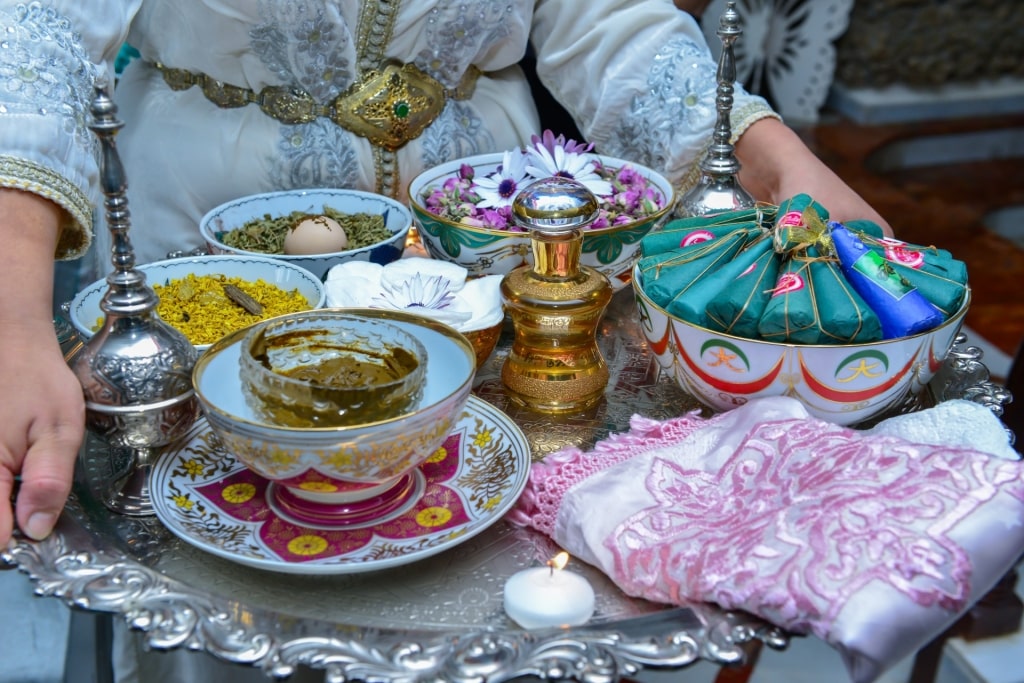
Hammam
Inside, once undressed (men and women have separate spaces), you’ll be treated to an intense black soap scrub and exfoliation to remove any dead skin before relaxing. Wraps, masks, or massages are sometimes offered in addition.
Museum of Moroccan Judaism
Housed in a former orphanage, the Museum of Moroccan Judaism is one of Casablanca’s most underrated museums.
Established to share the traditions, history and culture of Casablanca’s Jewish community, it also includes accounts of Sephardic Jews expelled from Spain and Portugal. Reportedly, this is the only such dedicated space in the Arab world.
Unfortunately, much of the detail is only presented in French. Yet this shouldn’t deter a visit if you have a reliable translation app. Displays include musical instruments, Torah Scrolls, Hanukkah lamps, and artifacts from regional synagogues. In the temporary exhibitions, photography collections and more contemporary pieces are usually shown.
Go Wine Tasting
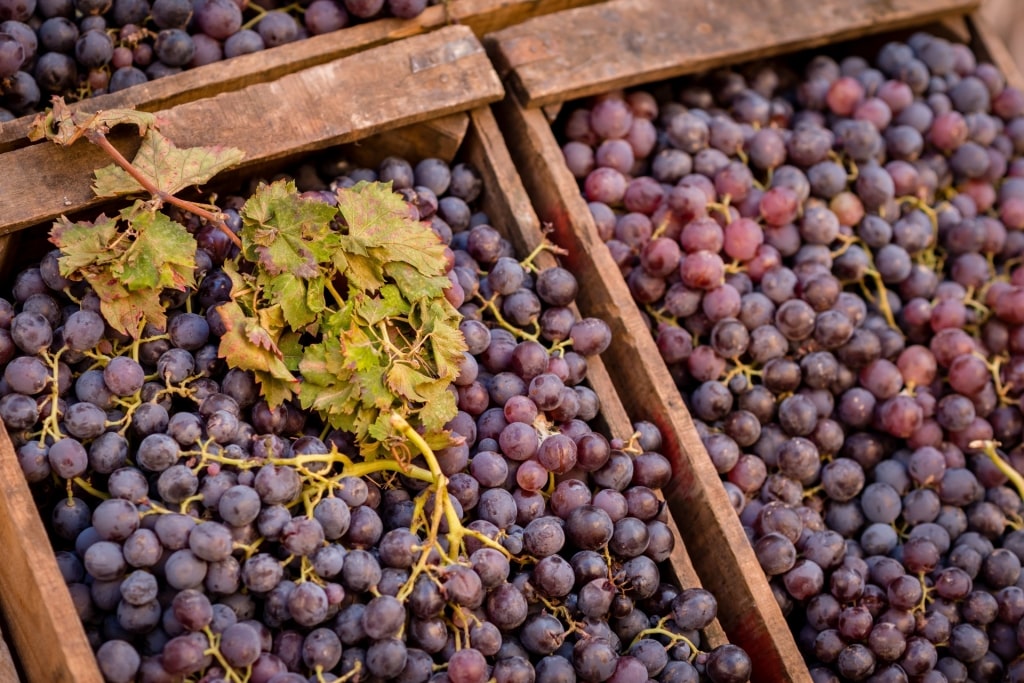
Moroccan grapes
Morocco’s homegrown grapes rarely feature on international wine lists, making the chance to sample the local vins irresistible. Just 40 minutes from Casablanca, the arresting vineyard landscape of Domaine Thalvin awaits.
Often assumed to be a by-product of the French protectorate, the nation’s wine production actually dates back millennia. However, the industry did flourish during the French period. As such, Domaine Ouled Thaleb, established in 1923, claims the title of the oldest winery in Morocco.
An oasis of calm, Domaine Ouled Thaleb is as much about the setting as the sampling. Soaring palms provide shade to the pool below, a first-class restaurant serves up Moroccan and French dishes, and rows of manicured vines unfurl outwards from the estate.
Settle in to sample the best of the terroir, particularly renowned for its Syrah, that benefits from organic production methods and the cooling winds of the Atlantic.
People Watch in Parks & Squares
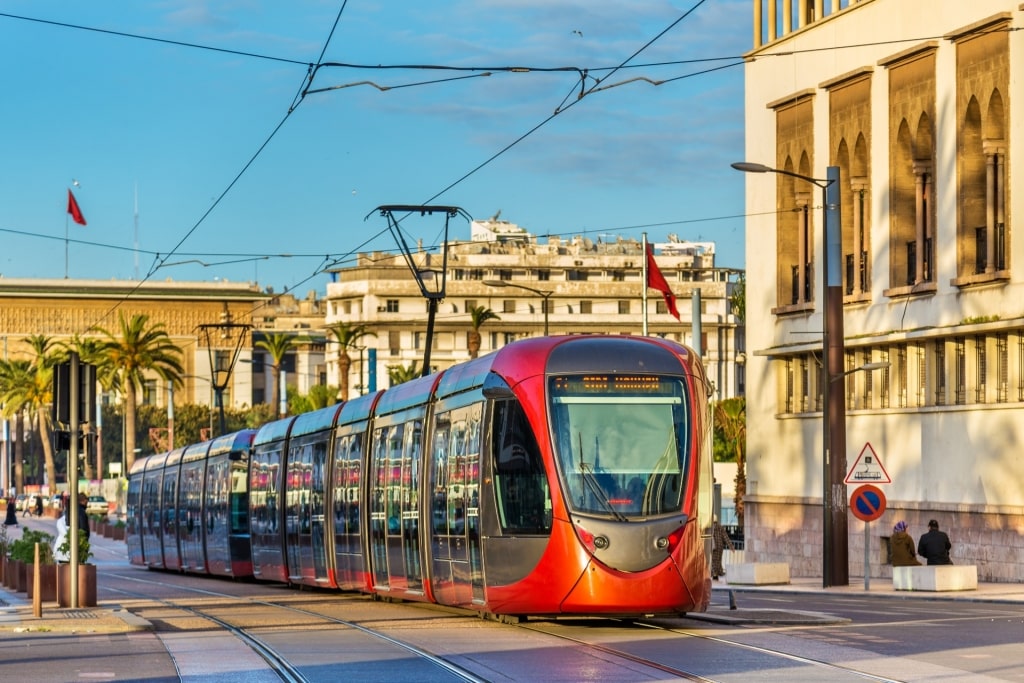
Tram in Casablanca
Sometimes, the best thing to do in Casablanca for local insight is to sit back and watch its comings and goings, usually from an al fresco café or under the shade of a palm tree.
At United Nations Square, outside the old Medina’s entrance, people-watching is a pleasure. Parisian-style cafés with forward-facing rows of tables flank this French architect-designed square.
Settle in for a sweet Moroccan mint tea or a nus-nus (milky coffee) and relish the trams gliding, scooters screeching, and street sellers jostling with suited workers.
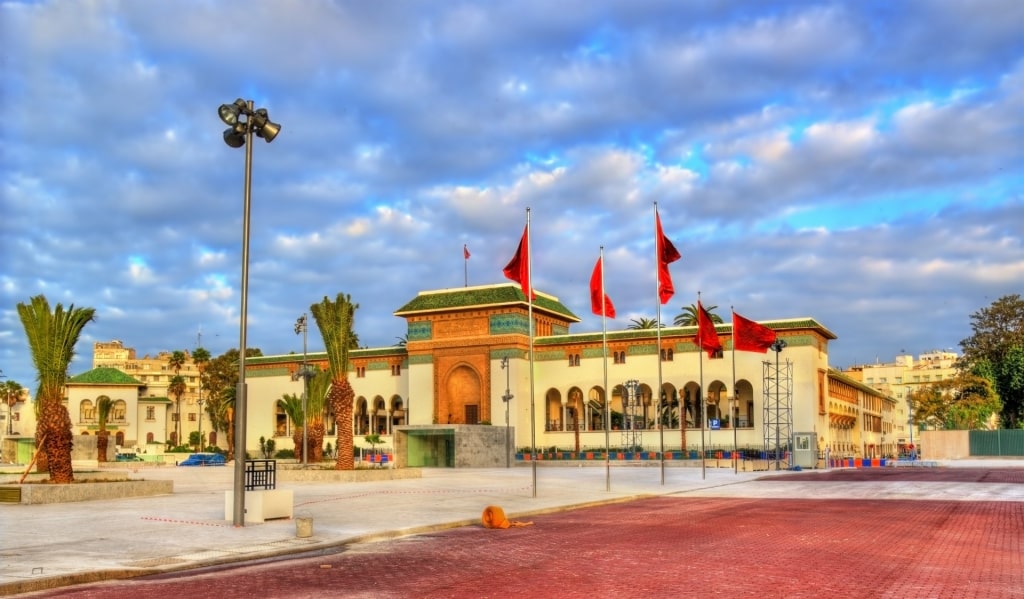
Mohammed V Square
Mohammed V Square, bookended by Casablanca’s courthouse and the futuristic, all-white Grand Theatre, is another equally animated meeting point.
If you’d prefer to slip away for a moment of serenity instead, head to the vast and central Arab League Park. Rows of date palms frame the long, narrow fountain, bringing a touch of traditional Islamic gardens to the contemporary center.
Admire Casablanca Cathedral
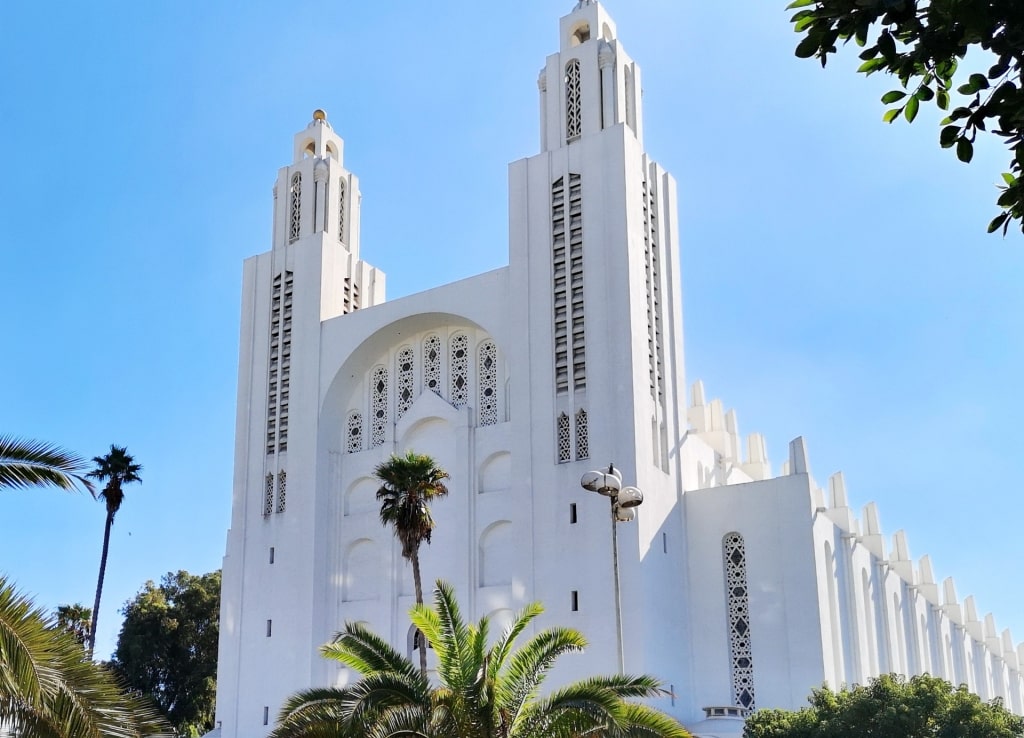
Casablanca Cathedral
Casablanca Cathedral, also known as Sacred Heart, has been closed for renovations in recent years. Yet the exterior is still reason enough to visit.
The burly, all-white neo-Gothic building is most notable for its two soaring towers. Dominating the northern corner of the Arab League Park since its construction in the 1930s, it stands out for both its scale and denomination. Once the renovation project is complete, it will reopen as a cultural center.
Take the Train to Rabat
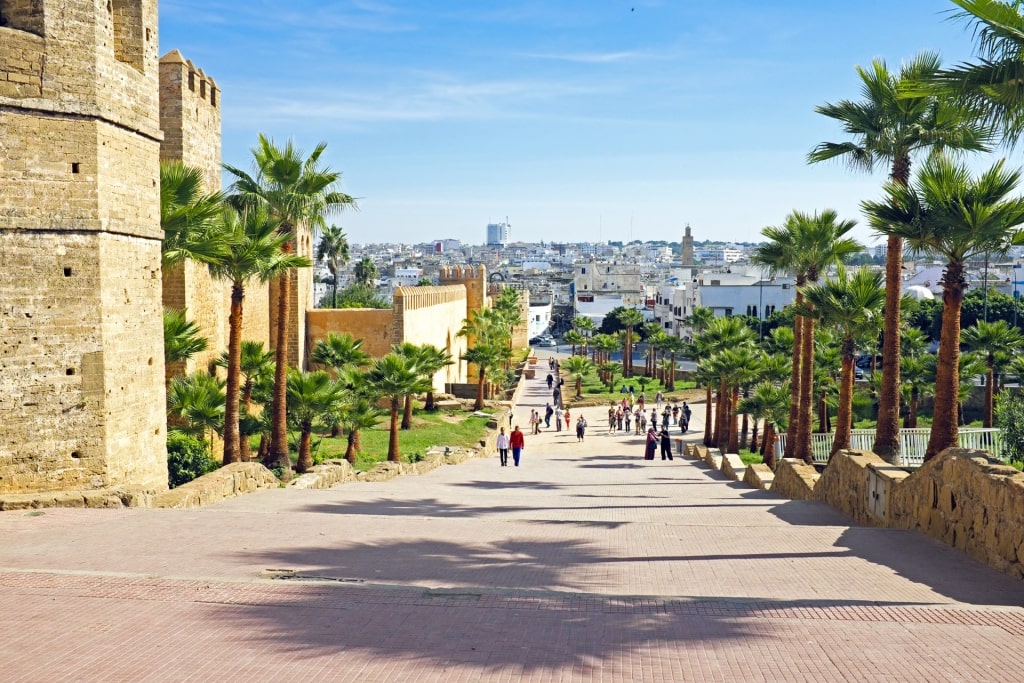
Rabat
Since the introduction of Morocco’s high-speed Al Boraq train service in 2018, hopping between the country’s north Atlantic cities has been a breeze. You can reach Rabat, a World Heritage Site and one of Morocco’s four imperial cities, in just one hour.
Rabat is also the nation’s capital. However, being only the seventh-largest city in Morocco, you can tour its highlights on a day trip.
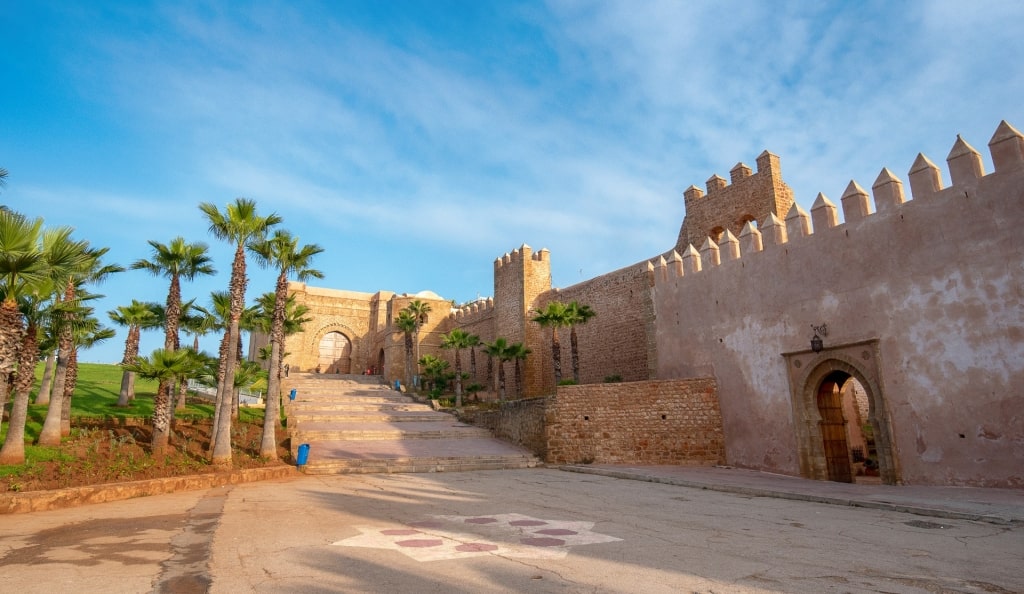
Kasbah of the Oudayas, Rabat
Amble through the Kasbah of the Oudayas, a walled citadel of whitewashed homes edged in blue. Pause in the shaded serenity of the leafy Andalusian Gardens. Then, explore Medina’s Old Market, one of Morocco’s most pleasant, bargaining for mounds of spices or ceramics.
For a grand finale, head to the ornate Mohammed V Mausoleum. This is the resting place of the beloved former king and his sons and their tombs are set inside an exquisite marble and zellige mosaic tiled interior.
Read: Best Time to Visit Morocco
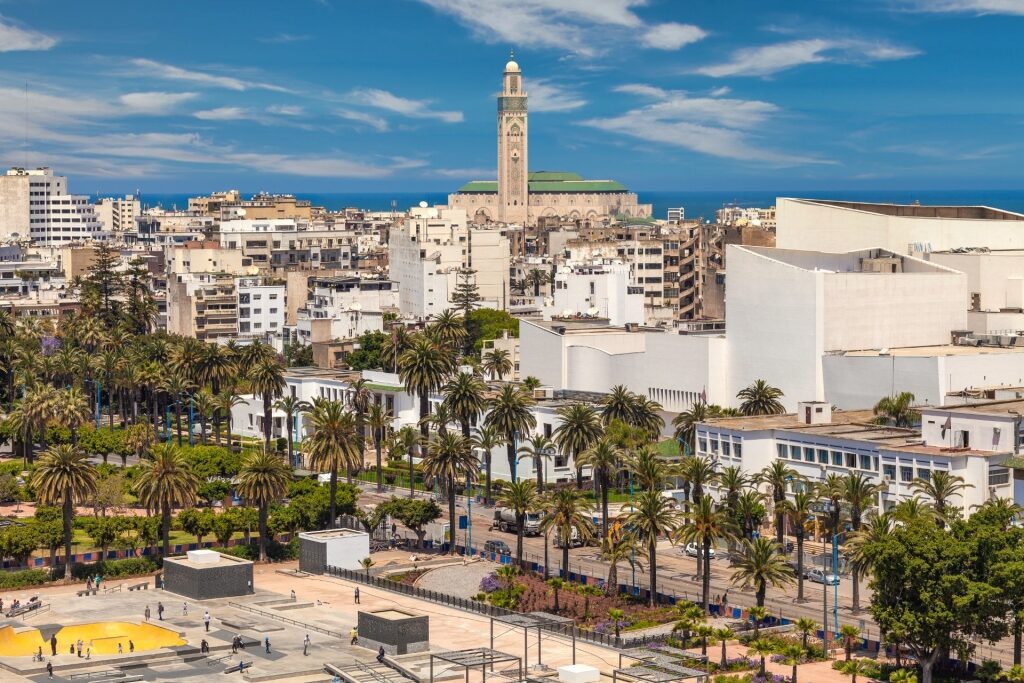
Casablanca
Interested in experiencing Casablanca’s character and charms? Browse Celebrity’s Casablanca cruises to start planning your African adventure.
